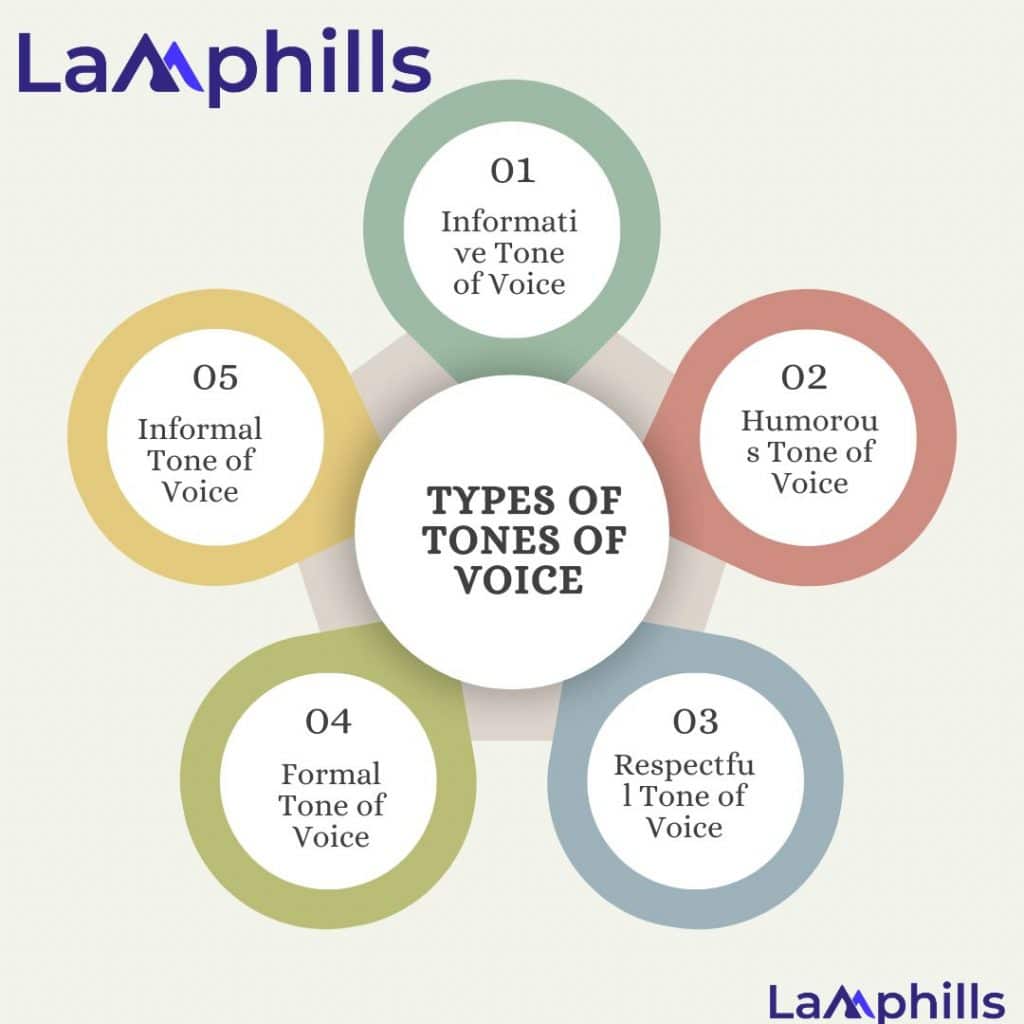Have you noticed how some brands speak to you in a way that feels right? It’s almost like they’re having a conversation directly with you, capturing your attention and making you feel understood. This magic comes down to a brand’s tone of voice. It’s not just about what a company says but how it says it. Think about your favorite energy drink ad—it’s likely informal and energetic, just like a friend encouraging you to try something new. Or consider a business insurance provider whose tone is formal and reassuring, giving you confidence and peace of mind.
I remember when I first encountered this concept at a small coffee shop I visited frequently. They had a chalkboard sign outside with playful messages like, “Espresso yourself!” It was fun and inviting, matching the warm atmosphere inside. This consistent tone made me feel at home every time I visited.
So, how do brands craft these unique voices, and how can you do the same for your business? Let’s explore some examples of tone of voice and see how they shape brand identity.
Key Points
- It’s not just what a brand says but how it says it. The tone of voice conveys the brand’s personality and affects how well it connects with its audience. For example, an energy drink might use an energetic, informal tone, while a business insurance provider might adopt a formal, reassuring tone.
- Maintaining a consistent tone across all platforms helps build strong brand recognition. Whether a brand uses humor or seriousness, the tone should be uniform across social media, websites, and other communications.
- The tone of voice should align with the brand’s core values and mission. For instance, a company known for its creativity might use a playful, imaginative tone, while one focused on professionalism might use a more formal approach.
- Brands like Pip & Nut, Uber, and Airbnb each use unique tones that suit their brand identities. Pip & Nut is conversational, Uber is straightforward, and Airbnb is empathetic, showcasing how tone can enhance brand messaging.
- To effectively communicate your brand’s message, consider word choice, sentence structure, and rhetorical devices. These elements shape the overall voice and tone, influencing how the audience perceives and interacts with your brand.
What is Tone of Voice?
The tone of voice is how you convey your message, not the message itself. You create a unique tone through your choice of words, sentence structure, point of view, and punctuation. These choices should reflect your brand’s values. For example, a casual and direct tone like “You gotta try this stuff!” might work best if you’re selling energy drinks. On the other hand, selling business insurance may require a more formal and technical tone, such as, “In today’s uncertain economic environment, every business owner needs protection from liability.”
Whatever tone you choose, consistency is crucial. Your tone should be the same across all platforms to build strong brand recognition. If you use humor on social media, keep it light on your website, too. If your brand is serious and authoritative, maintain that tone in everything from your blog to your newsletter.
The tone of voice applies to both written and spoken language. It’s how your business’s personality is expressed through words, whether they’re read or heard. Just like people have unique ways of expressing themselves, companies do, too. Some are friendly and courteous, while others are bold and direct. The key is to ensure your tone consistently represents your brand.
The Tone of Voice Examples
Let’s check out some brands that are doing a great job of finding and using their voices effectively and consistently. There are many tones of voice, like formal, humorous, motivating, respectful, assertive, and conversational.
These brands often mix these elements to create their unique tone. Here are some of my favorite examples:
#1. Pip & Nut
Pip & Nut does a fantastic job of humanizing its brand with an accessible and conversational tone. They use simple sentences to tell their story with honesty and detail. Pip & Nut have found the sweet spot between storytelling and informative content, establishing themselves as experts and showing their passion for their manifesto.
#2. Uber
Uber’s tone of voice is considerate, straightforward, bold, and consistent. It reflects its mission of providing straightforward and efficient service. The company’s direct writing mirrors the Uber app’s seamless experience.
#3. Airbnb
Airbnb adopts a dreamy, empathetic tone to address the stress of travel. They position themselves as a home away from home, offering a relaxing and welcoming experience. Their tone is approachable, providing peace of mind to travelers.
#4. Ryanair
Ryanair’s marketing communications are unconventional. They use humor and sarcasm, even making customers the punchline. Their bold, expressive tone makes them stand out, proving that playing it safe isn’t always necessary.
#5. Virgin Atlantic
Virgin Atlantic bridges the gap between your home and dream destinations. Their enthusiastic and descriptive tone portrays the perfect holiday, showcasing their commitment to high-quality travel.
#6. Spotify
Spotify’s tone is funny, direct, and casual. They play on humor and have fun interacting with their audience. Their relaxed and friendly tone aligns with the personality of their music app, making them memorable.
#7. Revolut
Revolut uses a cool, trendy tone to stand out in the finance industry. Their slogan, “Change the way you money,” reflects their radical approach and appeals to their global clientele.
#8. Nike
Nike’s “Just Do It” slogan is iconic. The company uses a confident and impactful tone to inspire its audience to achieve their goals with simple, effective messages.
Nike’s tone of voice is earnest and assertive. It consistently pushes athletes to reach their full potential through inspiring campaigns. One great example is its “Dream Crazier” campaign featuring Serena Williams.
#9. Dove
Dove’s empowering campaigns inspire confidence with an uplifting tone. They put the audience at the center, using real stories to convey body positivity and self-love messages.
#10.Dunkin’
Conversely, some brands like Dunkin’ take a more playful approach. For instance, check out their fun Instagram posts that capture their lighthearted vibe.
Brands like Old Spice, Nike, and Dunkin’ demonstrate just how much tone of voice can vary from one brand to another.
Tone of Voice of a Brand
Brand voice is all about your brand’s unique perspective and the values you stand for. It’s essentially your brand’s personality.
The tone of voice, on the other hand, is how your brand communicates with your audience. It includes things like word choice, communication style, and emotional tone.
Your tone of voice can adapt depending on the situation to ensure it’s the most appropriate and effective.
Importance of Tone of Voice in Communication
The tone of voice conveys emotion and plays a crucial role in how others perceive you and whether they are inclined to listen, especially in the workplace. While people often control their language, managing tone can be more challenging. The tone you use can significantly impact workplace productivity. For example, a manager or coworker who sounds enthusiastic when giving advice sets a positive tone, enhancing how employees view management and boosting overall engagement.
Several brands have developed distinctive tone-of-voice strategies. For instance, Mailchimp uses humor and a playful style to make email communication engaging and conversational. Their tone-of-voice guidelines are highly regarded in the industry.
The words and images you use shape your brand’s perception. This is crucial because a recent survey found that 88% of respondents consider it necessary to buy from brands they trust. When crafting your brand’s personality, consider how your brand should “speak” to others and the message you want to convey.
Read: Inspiring Brand Examples: Successful Strategies from Top Companies
How to Discover Your Brand’s Tone of Voice
Now that you know what tone of voice is and why it matters for your business, let’s dive into finding your unique tone of voice.
Step 1: Define Your Core Values
To define your core values, consider what makes your company unique and what your brand represents.
Take Zappos as an example. They outline their ten core values and explain their significance, making it clear to employees and customers what to expect from the company.
To begin defining your core values, you need to:
- Create a Mission Statement: Craft a concise mission statement that communicates who you are, what you care about, and how your brand achieves its goals.
- Strong Mission Statements Address:
- What are your company goals?
- How do you plan to achieve your goals?
- Who is your target audience?
- What do you want your company to be known for?
- Write down your answers and collaborate with stakeholders to develop a mission statement. For instance, Microsoft’s mission is: “Our mission is to empower every person and every organization on the planet to achieve more.”
- Once you have a mission statement, please share it on your website and with your audience and employees.
- Establish a Message Architecture: Align your brand’s communication and values with a message architecture consisting of goals like “friendly and playful” or “professional and authoritative.”
- To create a message architecture, list 50-100 adjectives describing your industry and categorize them into:
- Who we are
- Who we would like to be
- Who we are not
- Focus on the “Who we would like to be” category, prioritize the adjectives, and integrate them into your content strategy.
Step 2: Define Your Brand’s Tone of Voice
With your company’s “why” established, you can craft a unique tone of voice. Start by selecting adjectives that describe your desired tone.
Use the Nielsen Norman Group’s four dimensions of tone of voice to position your brand:
- Funny vs. serious
- Formal vs. casual
- Respectful vs. irreverent
- Enthusiastic vs. matter-of-fact
Determine where your brand’s voice should fall on each spectrum to develop the right tone for your brand.
Types of Tones of Voice
Even though tone is just a tiny part of communication, it’s crucial for effective interaction. Enhancing your tone can create a more positive work environment, improve understanding and respect among your team, and lead to better communication and teamwork. Here are five types of voice in communication:

#1. Informative Tone of Voice
An informative tone is used to share knowledge from research or expertise. This style is objective and factual, avoiding personal opinions or emotions. For example, a teacher uses an informative tone when explaining a lesson to students.
#2. Humorous Tone of Voice
Humour can be a powerful tool when used appropriately. It can enhance retention and make you more memorable. However, using humour in the wrong context can seem unprofessional or offensive. Knowing the right time and place to be funny is essential, just as there is a time to be serious.
#3. Respectful Tone of Voice
A respectful tone is warm, polite, and non-offensive to most audiences. For instance, Coca-Cola’s advertising often uses a respectful tone by showing universally relatable images of people enjoying their drinks. While this approach can appeal to a broad audience, it should not be overdone to avoid seeming insincere. Use a bright and sincere tone to express gratitude and authenticity, which helps build trust and comfort with your audience.
#4. Formal Tone of Voice
A formal tone is used in academic or professional settings to maintain courtesy. It features longer words without contractions or slang and focuses on facts rather than opinions. This tone is grammatically correct and appropriate for formal communications.
#5. Informal Tone of Voice
The informal tone is the opposite of the formal and feels more conversational. It resembles how you might talk to a friend, using colloquial language, slang, and shorter words. Informal communication often conveys more personal thoughts and emotions.
Read: Keep Your Brand at the Top With These 7 Evergreen Marketing Campaign Ideas
Creating a consistent and effective tone of voice for your brand is essential for building strong connections with your audience. Download this Tone of Voice Development Checklist
to guide you through developing a tone of voice that aligns with your brand’s identity and resonates with your target audience.
How to Identify Tone of Voice?
If you are curious about how you can identify the tone of voice, check this out :
Identifying Voice and Tone in Writing
To determine the voice and tone in writing, look at word choice, sentence structure, point of view, and rhetorical devices. Your word choice says a lot about your voice and tone: formal words suggest seriousness and respect, while informal words convey a casual and friendly vibe.
Sentence structure plays a role, too. Short, simple sentences reflect clarity and directness, whereas long, complex sentences show sophistication and nuance. Point of view also matters; the first-person point of view offers a personal touch, while the third-person perspective provides a more neutral stance. Lastly, rhetorical devices shape voice and tone. Metaphors and similes suggest creativity and imagination, while facts and statistics suggest logic and objectivity.
Additional Insights
Emojis can also enhance the voice and tone of your writing. They’re like modern-day rhetorical devices, adding layers of emotion and personality. You can find collections of emojis for your posts by searching for “LinkedIn symbols.”
Ultimately, identifying voice and tone in writing involves analyzing the author’s style, word choice, and sentence structure to uncover the intended attitude and personality. Voice is the author’s unique style, while tone reflects their attitude toward the subject. By understanding these elements, readers can connect with the writing more deeply.
Related Post
How To Write In Active Voice: The Ultimate Guide
Brand Communication in 2024: The 9 Shocking Trends No Company Can Ignore
Inspiring Brand Voice Examples: How Top Companies Craft Their Unique Identity






